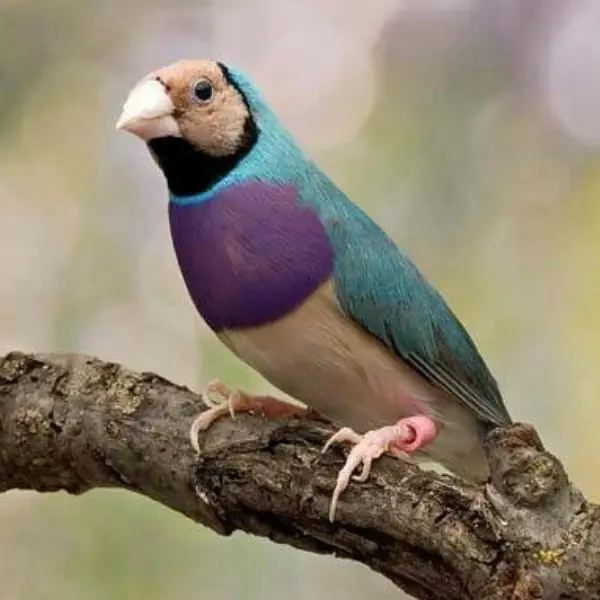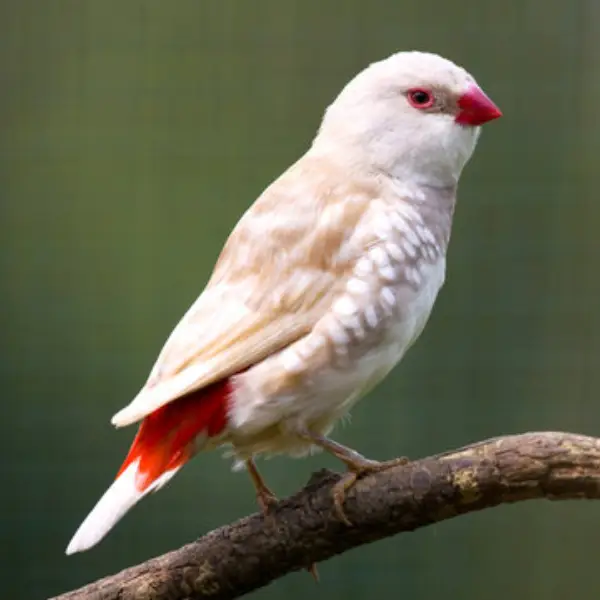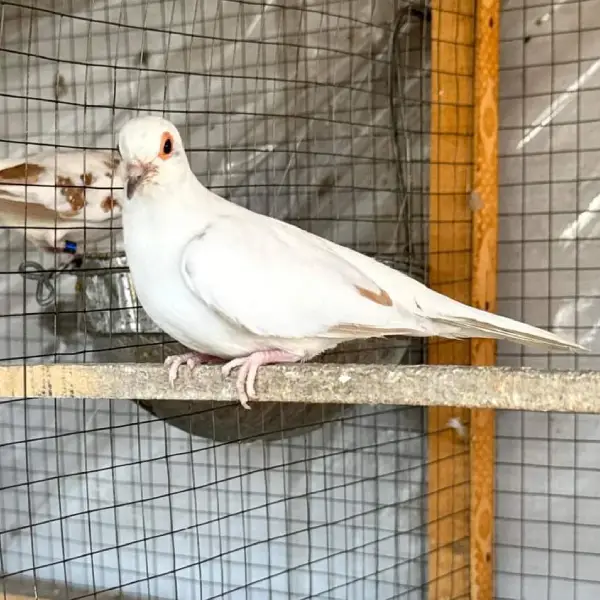Free shipping order over 20,000
Common Bourke
₨ 15,000 Original price was: ₨ 15,000.₨ 12,000Current price is: ₨ 12,000.
- Scientific Name: Neopsephotus bourkii (formerly known as Neophema bourkii)
- Size: Approximately 18-23 cm (7-9 inches) in length.
- Weight: Around 40-50 grams (1.4-1.8 ounces).
- Color:
- Body: The Common Bourke Parrot has a delicate pinkish-brown plumage, with a pale pink or salmon-colored breast and abdomen.
- Back and Wings: The wings are brown with blue highlights on the edges and shoulder areas.
- Tail: The tail feathers are long and tapered, with blue and pinkish tones.
- Face: The face is often a soft pink, with a subtle blue brow above the eyes.
- Beak: Small, curved, and greyish in color.
- Eyes: Dark, giving them a gentle expression.
- Legs and Feet: Greyish or pinkish in color, well-suited for perching.
SKU: REF. LA-5766-10-1-1-1-1-1-1-1-1-1-1-1-1-1-1-1-1-1
Categories: PARROTS, Uncategorized
Tag: parrots
Share
Share on facebook
Share on email
Important Keys:
Habitat
- Distribution: Native to Australia, primarily found in arid and semi-arid regions, including open woodlands, scrublands, and grasslands.
- Environment: Common Bourkes are adapted to dry environments, often inhabiting areas with sparse vegetation and access to water sources. They are ground-dwelling parrots that spend a lot of time foraging on the ground.
- Social Structure: They are social birds that often live in pairs or small flocks. They are typically active during dawn and dusk, which is when they are most often seen foraging and flying.
Diet
- Primary Food: In the wild, their diet consists mainly of grass seeds, which they forage from the ground. They also eat a variety of other seeds, fruits, and occasionally small insects.
- Captivity Diet: In captivity, a balanced diet includes a mix of high-quality seeds, pellets, fresh fruits, and vegetables. Providing a variety of food types helps to mimic their natural diet and keep them healthy.
- Feeding Behavior: They are gentle feeders and enjoy foraging for food. Offering millet sprays and other foraging opportunities in captivity can be beneficial for their well-being.
Breeding
- Breeding Season: In the wild, breeding typically occurs during the spring and summer months, following the rainy season.
- Nest Location: They nest in tree hollows or crevices, often using abandoned nests of other birds. In captivity, they readily use nest boxes.
- Egg Quantity: Clutches usually consist of 3-6 eggs.
- Incubation Period: The female incubates the eggs for about 18-21 days.
- Fledging: Chicks fledge approximately 4 weeks after hatching but continue to be fed by the parents for a few more weeks.
Lifespan
- In the Wild: Bourke Parrots typically live around 8-10 years, though this can vary.
- In Captivity: With proper care, they can live up to 10-15 years or more.
Behavior
- Temperament: Common Bourke Parrots are known for their calm and gentle nature. They are not as noisy or demanding as some other parrot species, making them ideal for apartment living or households where noise is a concern.
- Social Interaction: They are social birds that enjoy the company of other Bourkes or similar-sized birds. They can also bond well with their human caregivers.
- Vocalization: Their vocalizations are soft and pleasant, consisting of gentle whistles and chirps. They are not known for loud calls or excessive noise.
![]()
Be the first to review “Common Bourke” Cancel reply
Related Products
-
-70%
Zebra Finch
₨ 5,000Original price was: ₨ 5,000.₨ 1,500Current price is: ₨ 1,500. -
-14%
Green Star Finch
₨ 17,500Original price was: ₨ 17,500.₨ 15,000Current price is: ₨ 15,000. -
-20%
Lotino Gouldian Finch
₨ 15,000Original price was: ₨ 15,000.₨ 12,000Current price is: ₨ 12,000. -
-20%
Common Gouldian Finch
₨ 12,500Original price was: ₨ 12,500.₨ 10,000Current price is: ₨ 10,000. -
-43%
Blue Gouldian Finch
₨ 35,000Original price was: ₨ 35,000.₨ 20,000Current price is: ₨ 20,000. -
-20%
Silver Diamond Firetail Finch
₨ 31,250Original price was: ₨ 31,250.₨ 25,000Current price is: ₨ 25,000. -
-20%
-
-40%
Red Pied Dove
₨ 10,000Original price was: ₨ 10,000.₨ 6,000Current price is: ₨ 6,000.
Sign Up for Exclusive Birds Care Tips and Offers from Phool Panchi
Company links
Category
Contact
© 2024 Phool Panchi | Developed By v3Studio














Reviews
There are no reviews yet.